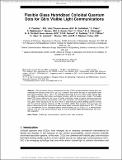Files in this item
Aggregation and travelling wave dynamics in a two-population model of cancer cell growth and invasion
Item metadata
| dc.contributor.author | Bitsouni, Vasiliki | |
| dc.contributor.author | Trucu, Dumitru | |
| dc.contributor.author | Chaplain, Mark Andrew Joseph | |
| dc.contributor.author | Eftimie, Raluca | |
| dc.date.accessioned | 2018-01-23T16:30:05Z | |
| dc.date.available | 2018-01-23T16:30:05Z | |
| dc.date.issued | 2018-12 | |
| dc.identifier | 251725938 | |
| dc.identifier | fde31e9c-d070-47ca-904e-e5146e57f432 | |
| dc.identifier | 85052332269 | |
| dc.identifier | 000456591600006 | |
| dc.identifier.citation | Bitsouni , V , Trucu , D , Chaplain , M A J & Eftimie , R 2018 , ' Aggregation and travelling wave dynamics in a two-population model of cancer cell growth and invasion ' , Mathematical Medicine and Biology , vol. 35 , no. 4 , pp. 541–577 . https://doi.org/10.1093/imammb/dqx019 | en |
| dc.identifier.issn | 1477-8602 | |
| dc.identifier.other | ORCID: /0000-0001-5727-2160/work/55378967 | |
| dc.identifier.uri | https://hdl.handle.net/10023/12595 | |
| dc.description | Funding: Engineering and Physical Sciences Research Council (UK) grant numbers EP/L504932/1 (VB), EP/K033689/1 (RE). | en |
| dc.description.abstract | Cells adhere to each other and to the extracellular matrix (ECM) through protein molecules on the surface of the cells. The breaking and forming of adhesive bonds, a process critical in cancer invasion and metas- tasis, can be influenced by the mutation of cancer cells. In this paper, we develop a nonlocal mathematical model describing cancer cell invasion and movement as a result of integrin-controlled cell-cell adhesion and cell-matrix adhesion, for two cancer cell populations with different levels of mutation. The partial differential equations for cell dynamics are coupled with ordinary differential equations describing the extracellular matrix (ECM) degradation and the production and decay of integrins. We use this model to investigate the role of cancer mutation on the possibility of cancer clonal competition with alternating dominance, or even competitive exclusion (phenomena observed experimentally). We discuss different possible cell aggregation patterns, as well as travelling wave patterns. In regard to the travelling waves, we investigate the effect of cancer mutation rate on the speed of cancer invasion. | |
| dc.format.extent | 37 | |
| dc.format.extent | 2127486 | |
| dc.language.iso | eng | |
| dc.relation.ispartof | Mathematical Medicine and Biology | en |
| dc.subject | Cancer mutation | en |
| dc.subject | Two-population mathematical model | en |
| dc.subject | Cell-cell and cell-matrix adhesion | en |
| dc.subject | Integrins | en |
| dc.subject | Aggregation patterns | en |
| dc.subject | Travelling wave patterns | en |
| dc.subject | QA Mathematics | en |
| dc.subject | RC0254 Neoplasms. Tumors. Oncology (including Cancer) | en |
| dc.subject | NDAS | en |
| dc.subject | SDG 3 - Good Health and Well-being | en |
| dc.subject.lcc | QA | en |
| dc.subject.lcc | RC0254 | en |
| dc.title | Aggregation and travelling wave dynamics in a two-population model of cancer cell growth and invasion | en |
| dc.type | Journal article | en |
| dc.contributor.institution | University of St Andrews. Applied Mathematics | en |
| dc.identifier.doi | 10.1093/imammb/dqx019 | |
| dc.description.status | Peer reviewed | en |
This item appears in the following Collection(s)
Items in the St Andrews Research Repository are protected by copyright, with all rights reserved, unless otherwise indicated.

